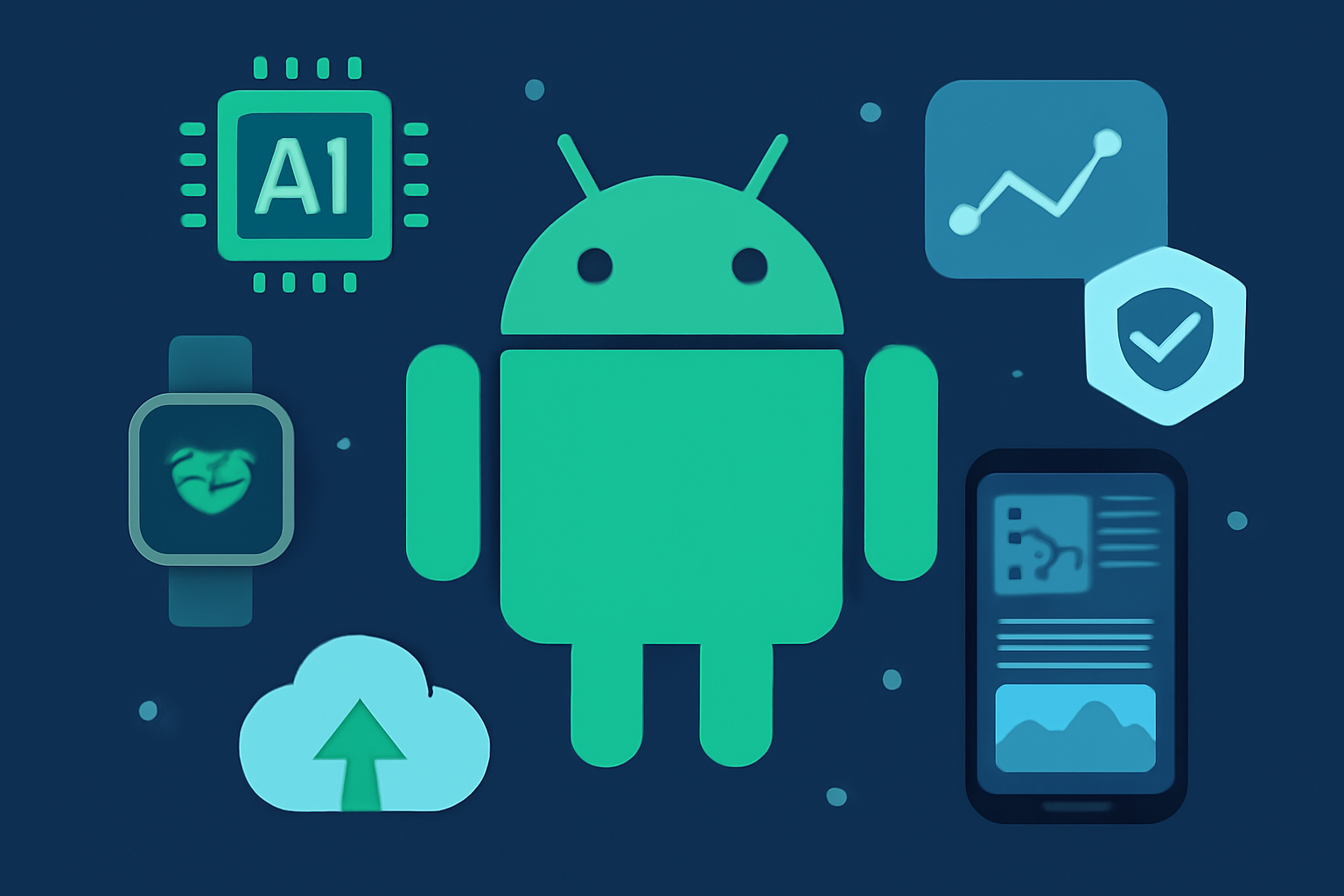As we step into 2025, the mobile app development industry continues to evolve at a rapid pace, driven by technological advancements and changing consumer behaviors. Android, being one of the most widely used operating systems globally, remains at the forefront of innovation. For businesses and developers alike, understanding the trends shaping Android app development is crucial for staying ahead of the curve. This article explores the key trends in Android Application Development that are set to dominate in 2025 and beyond, with a special focus on how a React Native App Development Company can harness these trends to deliver cutting-edge mobile solutions.
1. AI and Machine Learning Integration
Artificial Intelligence (AI) and Machine Learning (ML) are no longer just buzzwords; they are transforming how Android apps are being developed and utilized. From chatbots to voice recognition, AI is enhancing user experience, personalizing app content, and improving app performance. In 2025, we can expect even deeper integration of AI and ML into Android apps.
- Personalized User Experience: Apps will leverage AI to provide highly personalized recommendations, advertisements, and content based on user preferences, behavior, and historical data.
- Smart Features: Features like predictive text, facial recognition, and AI-powered image processing will become more widespread in Android apps.
For React Native app development companies, integrating AI and ML can be a bit challenging but not impossible. With the help of native modules and third-party libraries, React Native can integrate AI-powered features in apps, providing both performance and functionality across platforms.
2. 5G Connectivity and Enhanced Performance
As 5G networks continue to expand globally, Android apps will benefit significantly from the increased speed and reduced latency. In 2025, apps will be designed with 5G in mind, taking full advantage of the faster download/upload speeds, smooth real-time data transmission, and better-quality video streaming.
- Low Latency Apps: Apps, especially those in the gaming, AR/VR, and video conferencing sectors, will experience minimal lag time, enhancing user satisfaction.
- Real-Time Collaboration: 5G will facilitate better collaboration features in apps, allowing seamless real-time communication between users.
For native Android developers, this shift means that they will need to optimize apps to work with the specific features of 5G. React Native development can also benefit, with many libraries and tools being upgraded to support 5G’s capabilities, ensuring that cross-platform apps don’t miss out on the benefits.
3. Augmented Reality (AR) and Virtual Reality (VR)
Augmented Reality and Virtual Reality have been making waves in Android app development for years, but the future promises even more immersive experiences. With the launch of more advanced devices and enhanced AR/VR SDKs, Android apps in 2025 will leverage these technologies to create unique experiences.
- AR in Shopping: Retail apps will use AR to let customers virtually try on clothes, shoes, or even makeup, enhancing the shopping experience.
- VR for Gaming: The gaming industry will benefit from better VR integration, offering players more immersive, lifelike experiences.
For React Native developers, implementing AR and VR might require more custom solutions, as React Native does not natively support these technologies. However, using libraries and native code bridges, React Native can still provide impressive AR/VR features for Android apps.
4. Enhanced Security Features
As cybersecurity threats become more sophisticated, the need for robust security in mobile applications has never been more important. In 2025, Android apps will focus more on ensuring secure data handling, user privacy, and protection against threats.
- Biometric Authentication: Fingerprint, face recognition, and iris scanning will become more widely used for secure logins and transactions.
- End-to-End Encryption: More apps will adopt end-to-end encryption to safeguard sensitive user data, particularly in financial and healthcare sectors.
For native Android developers, the Android OS itself will continue to evolve with enhanced security features. React Native, while offering cross-platform flexibility, will need to rely on plugins and native code integration to provide the same level of security, ensuring apps meet the necessary security standards.
5. Wearable Tech and IoT Integration
The growing adoption of wearable tech and Internet of Things (IoT) devices is another trend that will shape Android app development in 2025. As smartwatches, fitness trackers, and home automation systems become more ubiquitous, developers will need to create apps that seamlessly integrate with these devices.
- Smartwatch Apps: Apps for wearables like Android Wear will become more feature-rich, offering users a variety of functionalities right from their wrists, such as fitness tracking, notifications, and even mobile payments.
- IoT Integration: Apps will be designed to connect with smart home devices, such as thermostats, lights, and security cameras, providing users with a unified, easy-to-control smart home ecosystem.
React Native developers will need to ensure their apps are compatible with a wide array of wearable devices and IoT platforms, which may require integrating platform-specific SDKs or using React Native bridges for accessing IoT APIs.
6. App Speed and Performance Optimization
As mobile users continue to demand faster, smoother experiences, Android app developers will focus more on performance optimization in 2025. Slow-loading apps and poor performance are significant pain points for users, and developers will work hard to improve app responsiveness.
- Faster Load Times: Developers will use better coding practices and technologies like Jetpack Compose and Kotlin to build apps that load quickly, even with slow internet connections.
- Optimized Battery Usage: Apps will be designed to be more energy-efficient, which is especially important for users with smartphones that require extended battery life.
React Native, being a cross-platform framework, will need careful optimization to ensure performance on Android devices is not compromised. Developers will likely adopt more efficient algorithms, reduce the app’s size, and leverage tools like Hermes to improve React Native app performance.
7. Sustainability and Green Tech
In 2025, sustainability will become a key concern in Android app development. Developers will focus on creating eco-friendly apps by optimizing them for energy efficiency and reducing the carbon footprint of their operations.
- Low Energy Consumption: Apps will be designed to use minimal resources, especially for devices with lower processing power, extending the battery life and improving overall user experience.
- Sustainable Business Practices: Android app development companies will aim to reduce their environmental impact by optimizing development workflows and embracing green coding practices.
React Native’s cross-platform nature helps in reducing server load and energy consumption since developers write the code only once for both Android and iOS platforms, reducing the environmental cost of app development.
Conclusion
As we look ahead to 2025, Android application development is poised to embrace cutting-edge technologies that will reshape how users interact with mobile apps. From AI and 5G connectivity to AR/VR and enhanced security, the future promises a more immersive, personalized, and secure mobile app experience. Whether you’re working with React Native or native Android development, staying ahead of these trends will be crucial for delivering innovative, high-performing, and user-friendly apps in the coming years.



